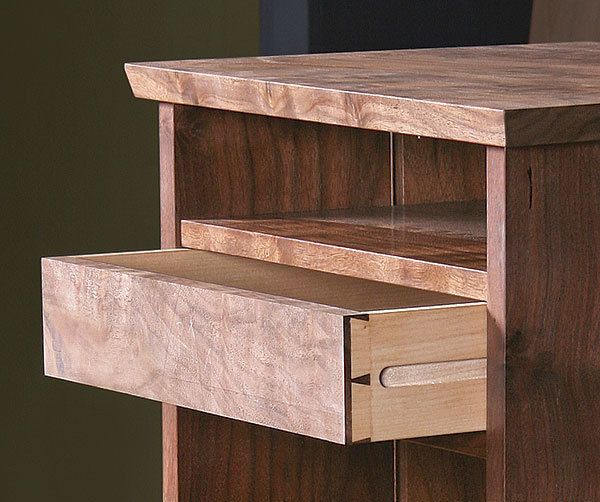Side-Hung Drawers
Build smooth-sliding drawers that survive the seasons
Synopsis: Side-hung drawers are grooved on the sides and slide on wooden runners. Since their seasonal movement is almost entirely in height, they are made to fit snugly from side to side, with space for expansion above and below. This type of drawer is easy to fit and smooth in operation. It can be pulled almost all the way out without pitching forward, and when pushed in, the runner acts as a stop. Learn the secrets to making side-hung drawers that you can push in and pull out with one finger.
I learned to make drawers under the tutelage of David Powell, who trained in the 1940s in his native England at the renowned Edward Barnsley Workshop, where furniture was still made entirely by hand. As a result of his training, Powell could do handwork with extraordinary efficiency and accuracy. The drawers he made were simply beautiful, each one so elegantly constructed it could have been a jewelry box. The proportions of the parts and the spacing of the finely cut dovetails immediately drew your eye and conveyed a sense of purpose and permanence. And how they functioned! They slid with a velvety smooth action and without the slightest jog or rattle.
After emigrating to the United States in the 1960s, Powell altered his drawer design. The drawers he’d learned to build at Barnsley’s, sized to fit the drawer pocket snugly in height as well as width, couldn’t deal with wild swings in humidity, so he began making drawers that were grooved on the sides and slid on wooden runners. Since the seasonal movement of a solid-wood drawer is almost entirely in its height, Powell made his drawers so they still fit snugly side to side, but were suspended in the pocket with space for expansion above and below. This solved the humidity problem, and Powell found that side-hung drawers were also easier to fit and smoother in operation. A sidehung drawer, he saw, could be pulled way out without pitching forward, and when pushed in, the runner would act as a stop. In addition, the usual wide gap above a drawer front was replaced with equal, narrow reveals above and below it. And with the drawer sides snug to the pocket, the runner was never visible. I’ve been using side-hung drawers for 30 years now. Here’s how I make them.
Do the dadoes
Begin by routing dadoes for the runners in the case sides. These are purely for location and can be as shallow as 1 ⁄32 in. You’ll be screwing the runners into them, but don’t be tempted to skip the dado and rely on screws alone—the dado offers insurance that the runner won’t migrate over time. To keep from compromising the integrity of the case side, I never make these dadoes deeper than 1 ⁄16 in. While at the router table, cut two 3 ⁄16-in.-deep test grooves—one stopped, one through—in a scrap piece. The test piece will help you fit the runners.
Photo: Jonathan Binzen
For the full article, download the PDF below:
Fine Woodworking Recommended Products

Jorgensen 6 inch Bar Clamp Set, 4 Pack

Dubuque Clamp Works Bar Clamps - 4 pack























Log in or create an account to post a comment.
Sign up Log in